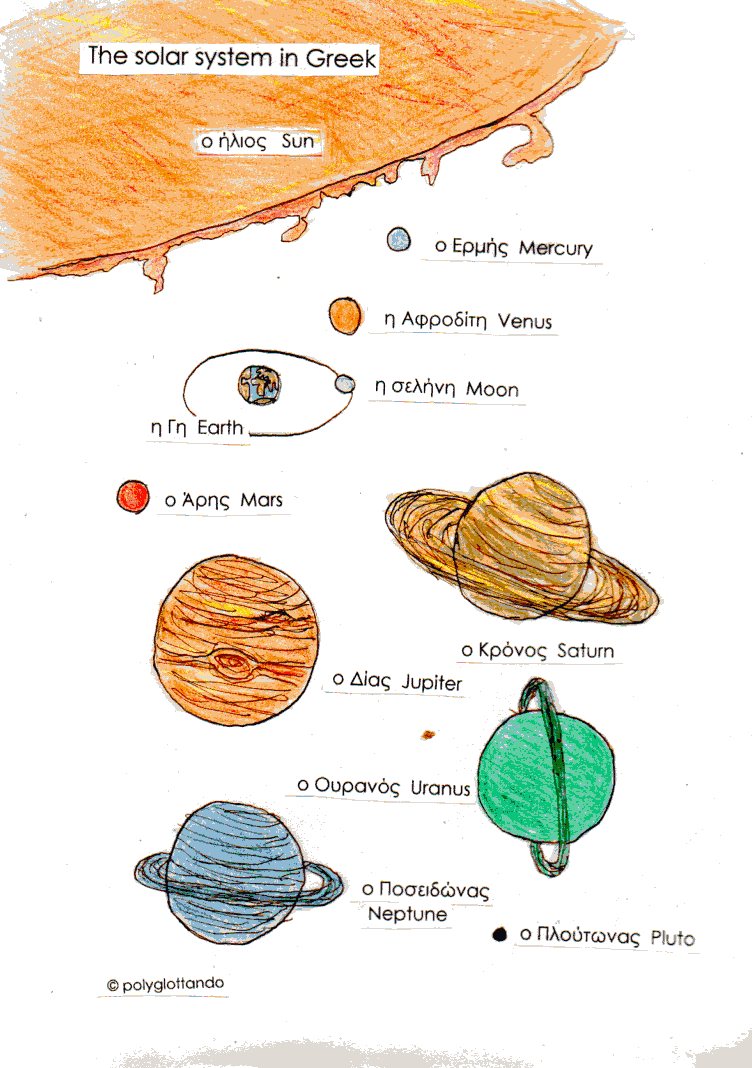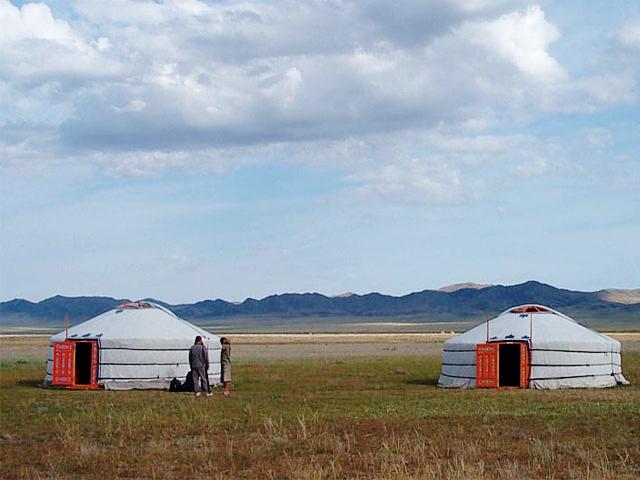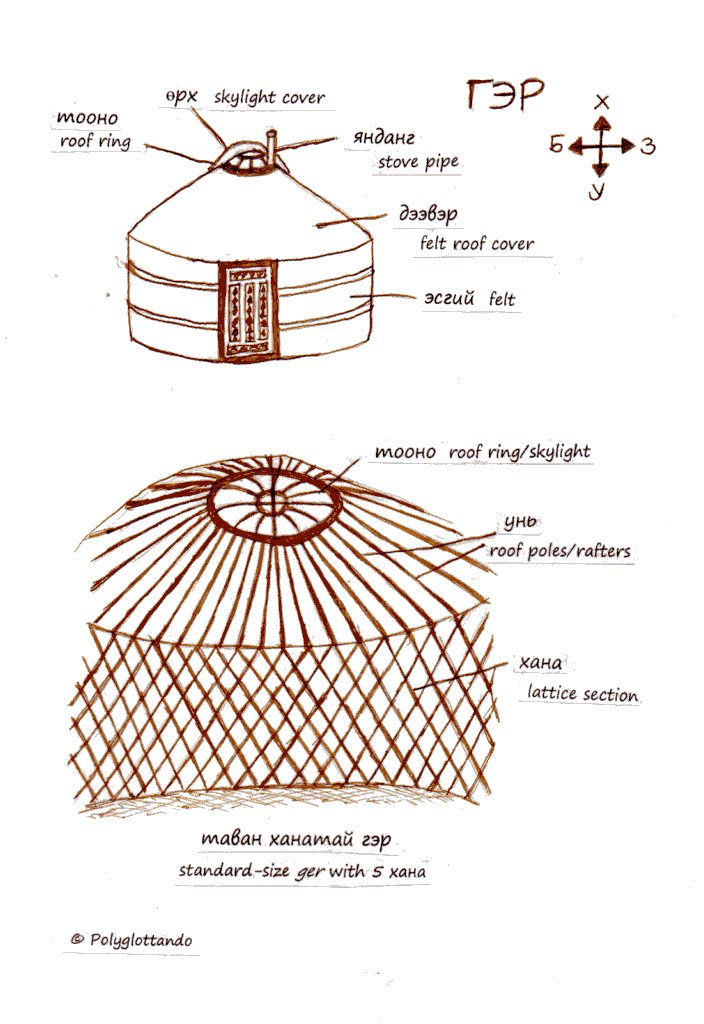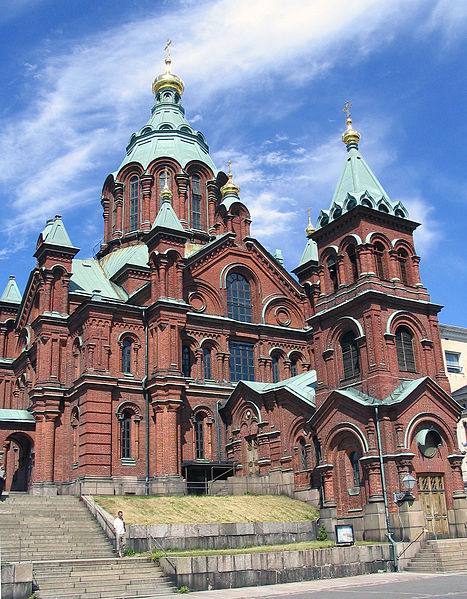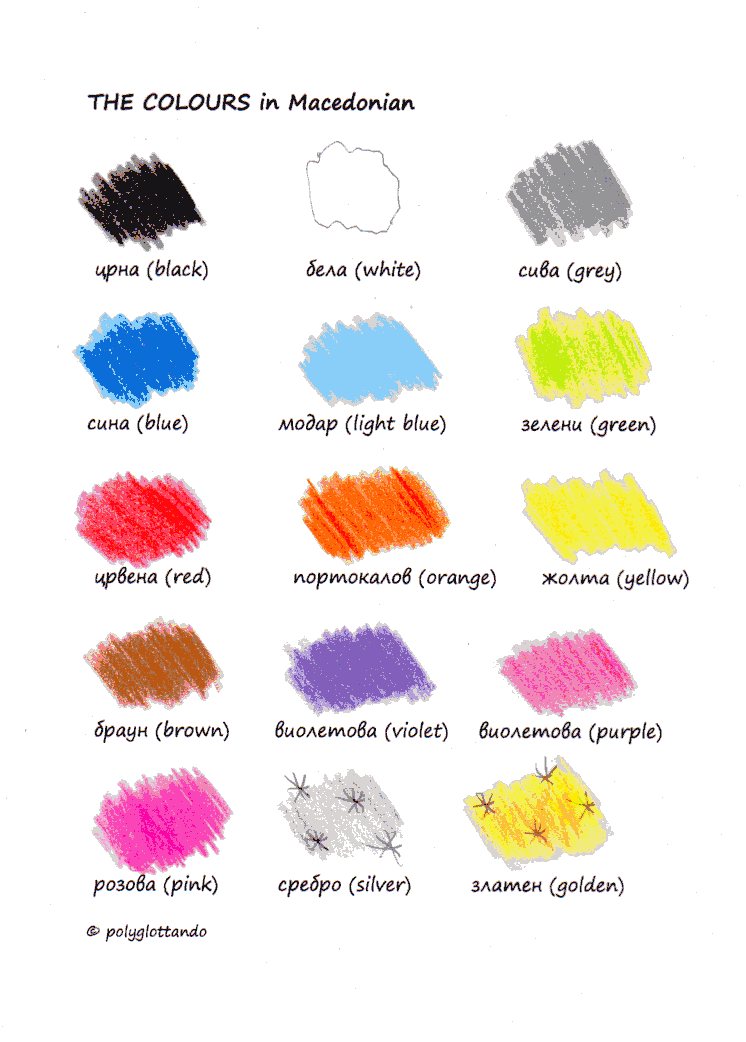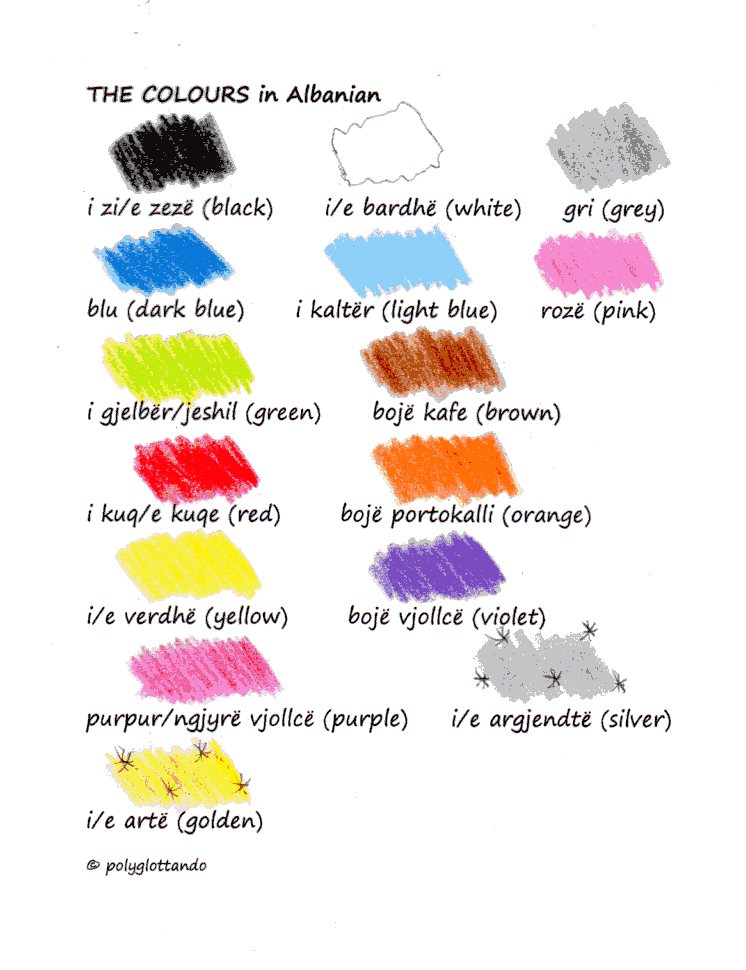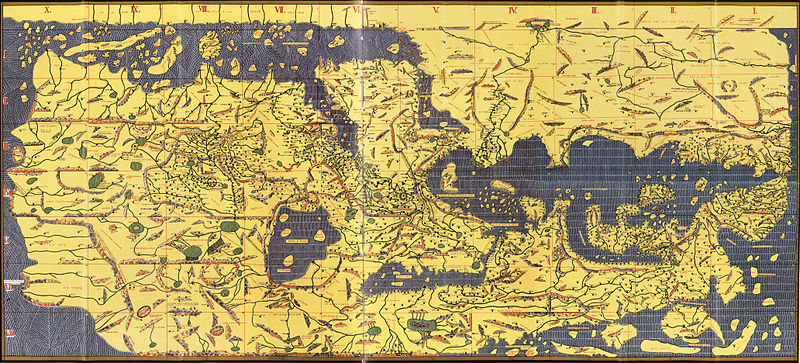Today´s post is about the different names of the planets of the solar system. Most languages use the common western terms of the Roman names for the planets, but some languages use different names that are not derived from Roman mythology. Among these are e.g. Chinese and Japanese and Greek.
Monthly Archives: February 2015
Mongolian yurts (ger)
Today’s blog post will be about Mongolian ger – or yurts – which literally simply means home . The term yurt is of Turkic origin and originally only referred to the mark on the ground left behind by a yurt that has been moved elsewhere and by extension to a person’s homeland and clan.
Yurts are made of portable lattice structures, the standard ger consisting of 5 lattice walls (хана) . These are held together by tension bands, which ensure that the structure does not fall apart. The yurt is covered by several layers of felt (эсгий), one layer in the summer and four layers in the winter. The wool for the felt usually comes from the pastoralists’ sheep herds. The felt coverings are often decorated with traditional Turkic geometric patterns. The lattice walls are topped by a roof ring or crown (тооно) which is held in place by rafters or roof poles (унь). In addition, one or more poles or columns support the roof ring or crown. The skylight in the crown can be covered by a skylight cover (өрх). The door always faces south.
The furnishings in a ger have fixed places:
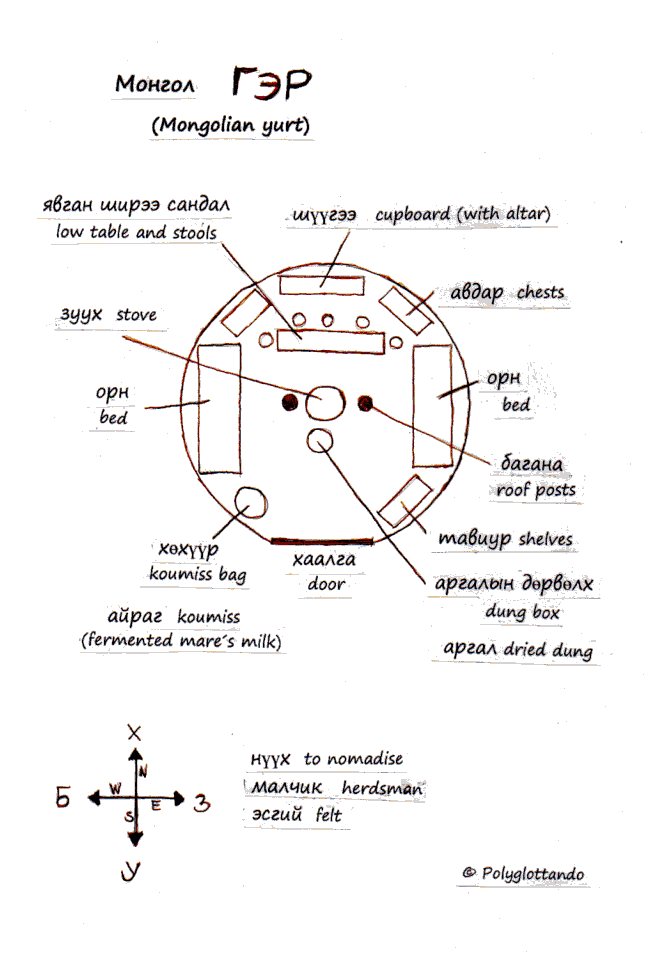 Yurts have stoves that are heated by dried dung (аргал), which is collected in the open steppe in a special basket.
Yurts have stoves that are heated by dried dung (аргал), which is collected in the open steppe in a special basket.
Cultural and educational TV in French and German “arte”
For those of you who would like to improve or practice their hearing comprehension in French or German, but who do not like the usual low-quality programs of mainstream television and who prefer to watch educational programs and documentaries about culture, history, politics, geography, sciences and topics of current interest and good movies, the French-German cultural TV station “arte” might be interesting for you. All their programs are translated into both languages and can be watched via the internet (you can choose the language on-screen after starting a program).
Pour la version française: www.arte.tv/guide/fr/plus7/
Und für die deutsche Version: http://www.arte.tv/guide/de/plus7/
(Note: These links might not work for all countries)
Polyglottando now also on facebook!
Polyglottando is now also on facebook! You can find the page “Polyglottando” here: https://www.facebook.com/pages/Polyglottando/843034165737625
While the facebook page also shows the links to new blog posts, the feed is not the same and you can find many more links to interesting articles about cultural diversity and international customs and traditions, as well as interesting stuff and facts about languages worldwide there. So if you are interested in these topics, it is always worth following polyglottando on facebook as well! 🙂
Finnish survival phrases !
Hei! Hello!
Moi! Hi!
Mitä kuuluu? How are you?
Näkemiin! Bye-bye!
Kiitos! Thank you!
Paljon kiitoksia! Thank you very much!
Ole hyvä! You are welcome!
Anteeksi! I’m sorry!
Hyvä on! OK!
Loistava! Great!
Onnea! Good luck!
Minun nimeni on… My name is….
Mikä sinun nimesi on? What’s your name?
Hauska tavata. Nice to meet you.
Ymmärrätkö? Do you understand?
En ymmärrä. I don’t understand.
Kyllä. Yes.
Et. No.
Apua! Help!
Puhutteko englantia? Do you speak English?
En puhu paljoakaan suomea. I don’t speak much Finnish.
Colours in Macedonian and Albanian
Some expressions and proverbs made visual
Useful multilingual on-screen keyboard to type non-Latin alphabets
A website I find very useful for typing non-Latin scripts and languages is the Lexilogos online keyboard: http://www.lexilogos.com/keyboard/index.htm
It is very comprehensive and features keyboards for dozens of scripts. You just type your text on-screen into a window using the keyboard provided and then you can copy and paste your text into your document or text. It is especially useful if your computer skills aren´t that brilliant (like mine) and you don´t know how to type a certain language otherwise or if you cannot change your keyboard for some reason or other.
Welcome to polyglottando! :)
This blog will be about polyglottism and interesting bits and pieces about languages worldwide, multilingual living and about cultural diversity and different worldviews. The focus of this blog will be on languages that are not so commonly known and which are rarely studied, so not on the “big languages” for which there are dozens of resources elsewhere and which most people choose to study.
I will start by briefly outlining what this blog will be about and what it will *not* be about and what you can expect from following polyglottando.
Polyglottando will be an exploration and a ´journey´ around the world of languages, especially the ´minor´, less-well-known languages which few people choose to learn, and about interesting insights into cultural diversity, customs and traditions and cultural peculiarities from countries around the world. I will also share useful phrases and interesting expressions from languages worldwide with you.
Since I consider languages merely a tool and a means to an end to pursue all of my other interests, but not as a ´science´, I don´t enjoy discussions about grammar or linguistic peculiarities, and my blog will not treat these topics because of this. Nor will this blog sell you a particular “infallible” one-size-fits-all method of learning languages, since there is no such thing and any achievements in multilingual language proficiency always boil down to persistant regular and daily practice over decades in the end. I am not a language teacher and wouldn´t enjoy to be one, so this blog won´t “teach” you anything in the strict sense, neither a language nor any method. Moreover, as I am completely against the media hype and celebrity cult which pervades society nowadays, and also the polyglot community, I will *not* cater to this trend in any way and so you won´t ever get to see any youtube videos or similar from me.
I am looking forward to an interesting global journey with you! 🙂 Let´s depart!


